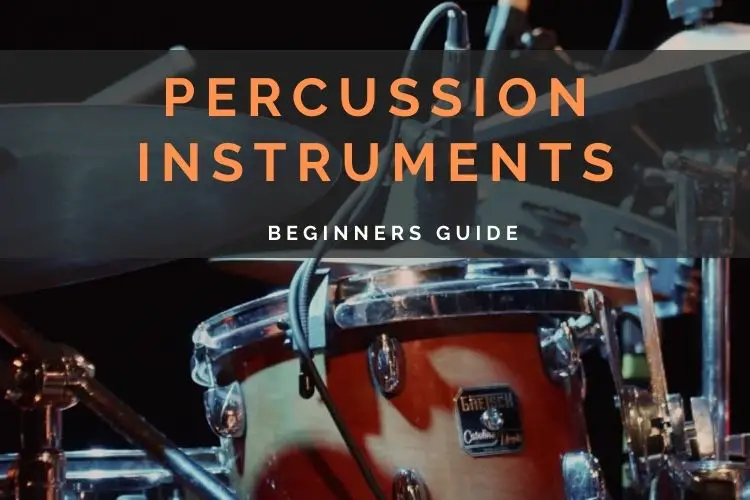So you want to be a drummer, and you’re considering joining the school band.
While joining the school band can seem as simple as signing up, there is a lot to consider when starting to play an instrument, especially when you’re becoming a percussionist. Most importantly, you have to make sure you are looking for and buying the right equipment at a good price.
This article will serve as an overview of the ins and outs of shopping for snare drums and other percussion essentials, for someone beginning to play such band instruments.
What Equipment Do I Need as a Beginner Drummer?
Snare Drum
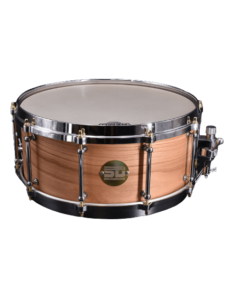
The snare drum is an essential part of any percussionists’ tool kit. The snare drum is a cylindrical instrument that produces a sharp sound when struck.
However, most basic percussion kits do not come with a full snare drum and instead include a practice pad. You will most likely have to purchase a snare drum separately for at-home use.
Practice Pad

Unlike the snare, a practice pad is usually included in all basic percussion kits. The practice pad is smaller and produces a softer sound than the snare. As the name implies, the practice pad is to be used when a snare is unavailable.
Drumsticks
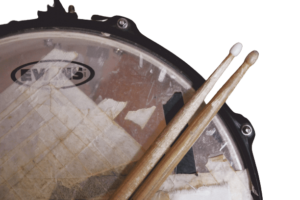
Drumsticks should also be included in any percussion kit you buy. However, while drumsticks may just seem like simple pieces of wood, they come in different shapes for different types of playing, and it may be necessary to buy multiple sets of sticks.
Bells
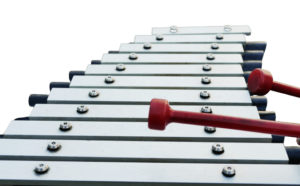
Bells are also standard among most percussion kits. Bells are similar to the xylophone, except they are much smaller and the keys are metallic.
Mallets
Any kit you buy should include mallets for your bells. However, in the future, you may need to buy other specialized mallets for such instruments as the marimba and the xylophone.
Stands
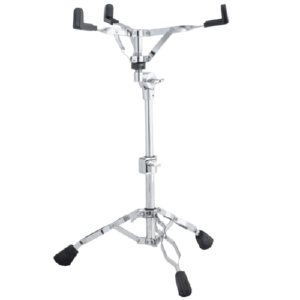
Your kit should also come with a stand that props up your practice pad and one that holds your bells. It could also include a stand that holds both the bells and the practice pad.
What Percussion Kit is Best, and What is a Good Price?
Any good drum kit should have almost every element listed above, except most likely the snare drum.
Prices vary mostly depending on the brand and what the kits include. Your school may provide a rental service, or you may have to purchase a kit yourself. Another option might be to opt for used percussion kits, possible to find in specific instruments marketplaces like Reverb.
The major brands include the following:
Pearl
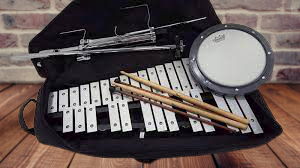
Pearl offers a kit that includes bells, drumsticks, mallets, a stand, a practice pad, and a stand. The kit, as with most kits, comes with a rolling carrying case.
Currently, the price for a Pearl kit is around $230. Pearl also offers another kit that includes a snare drum for around $100 more.
Yamaha
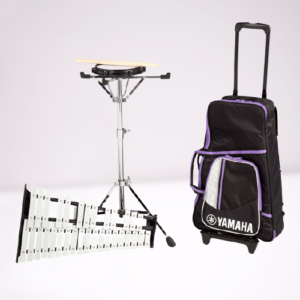
Yamaha kits also include the basic components like the Pearl kit, and they cost about $200.
Yamaha also offers a version that includes a snare drum, although this version is currently about $330.
Ludwig
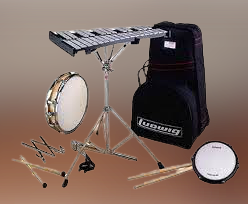
Just like Yamaha and Pearl, Ludwig offers the essential components along with a rolling bag, but Ludwig’s kit costs a little more at about $290.
Ludwig offers a version that includes a snare drum, but this can cost over $400.
Vic Firth

Vic Firth does not offer a full kit, and instead only offers a bell and mallet set at a high price of $350. However, Vic Firth is well-known for its high-quality drumsticks, so if you ever need to replace your sticks, Vic Firth might be the way to go.
All in all, there exists a wide range of kits at various prices.
Overall, the Pearl kit is the most cost-effective, but your band director may have a specific brand that they would like you to practice with, so keep the other brands in mind.
What About the Snare Drum?
If you decide not to get a kit that includes a snare, you still have many options for purchasing a standalone snare.
If you are unfamiliar, a snare makes its unique sound through the vibrations of wires underneath the head of the drum. The quality of the snare you purchase depends on the quality of the head, the wires, and the overall size and design of the drum. The brand of the snare can also significantly drive up the price.
For a school band, you should not have to spend more than $50 on a snare.
Glarry offers a snare for a bit over $30, and this is around the price and quality you should be looking for.
Granted, brands like Yamaha offer more advanced, high-quality snares that cost anywhere from a hundred to thousands of dollars, but those are generally for professional drummers or enthusiasts.
How Hard is it to Play the Snare?
Playing the snare drum requires a good understanding of rhythm. You will also have to learn the proper technique for holding a drumstick.
Once you’ve got the basics down, it can be difficult to learn more complicated rhythm patterns, but just like with any other instrument, enough practice can turn you from a beginner into an intermediate level drummer, or in the future a professional.
And If I Choose Marching Band Snares?
As explained here, almost all marching band percussion instruments have some differences when compared to the ones in a regular band. The snares required for marching bands are slightly different than those for traditional school bands. Marching snares also require a carrier that rests on your shoulders as you march. The snare also tends to have more depth and is larger than a traditional snare.
Marching snares and their carriers are more expensive than regular snares, and they can cost anywhere from $150 to over $500. You can also consider purchasing a used set for much less.
How Can I Learn to Be a Percussionist?
You will generally learn best when surrounded by other percussionists in a school band. However, if you want to learn some skills on your own, there are many online resources you can use to teach yourself.
- There are countless YouTube channels dedicated to drum lessons and we recommend the channel called Drumeo.
- The web service Master Class has lessons taught by Sheila E., one of the world’s best drummers, but these lessons can be costly.
We advise you to stick to the free lessons on YouTube when you are starting off, and make sure to listen to your band director for personal tips.
The Takeaway
Overall, becoming a percussionist in your school’s band can become a costly endeavor, and there is a lot you have to understand about your equipment and how much each piece costs.
However, if you are dedicated to becoming a proper drummer, the costs of your instruments will soon be outweighed by the euphoria you feel after successfully completing your first drum roll.

